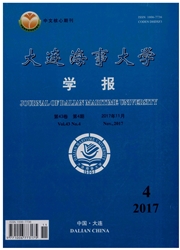

 中文摘要:
中文摘要:
运用复杂网络理论与聚类分析相结合的方法,以港口城市为节点构建网络,借助网络整体结构及节点中心性评价指标揭示海上丝绸之路东南亚航运网络空间格局及其沿线港口分布特征.结果表明:其网络整体呈现"T"字形结构,度分布近似符合幂指数分布规律,具有无标度特性和"小世界网络"特征;同时,从节点中心性角度分析,东南亚沿线港口局部呈现集聚特征,区域化明显,其中新加坡港、巴生港、丹戎帕拉帕斯港和雅加达港中心性值最高,建议以新加坡、马来西亚及印度尼西亚地区为主构建海上丝绸之路港口发展核心区域,同时促进区域内中小型港口建设,加强与东南亚港口的物流合作.
 英文摘要:
英文摘要:
By using complex network theory and cluster analysis,the spatial pattern and the characteristics of ports distribution of Southeast-Asian Maritime Silk Road were studied based on the construction of shipping network nodes( cities),the network structure and node centricity evaluation index.Results show that the whole spatial pattern appears as " T" structure,and an exponent-function-like density distribution with a characteristic of scale-free property,and small-world network. Meantime,in the view of centralities,the ports distribution of Southeast-Asian Maritime Silk Road presents agglomerate and obvious regional agglomeration. Especially,Singapore,Port Klang,Jakarta and Tanjung Pelepas have the largest central values. It is suggested to take Singapore,Malaysia and Indonesia regions as regional certre of port development,and promote the construction of small and medium sized within the region,and strengthen the cooperation of port logistics between Southeast-Asian and China.
 同期刊论文项目
同期刊论文项目
 同项目期刊论文
同项目期刊论文
 期刊信息
期刊信息
